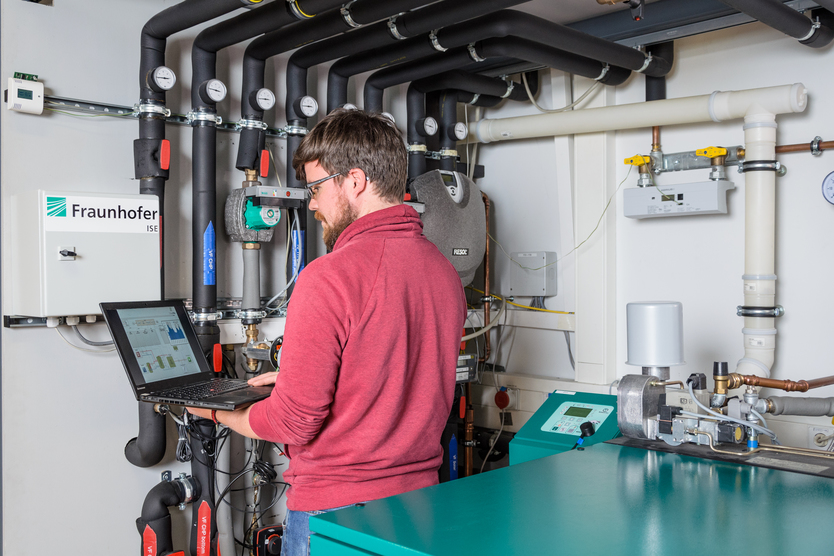
Experimental setup of the project
© Fraunhofer ISE
Ripple control technology, a tried and tested method, has already been used for more than 100 years to operate streetlights. This technology based on microprocessor receivers could enable the low-cost and timely installation of smart grids at the distribution grid level, and thus make a decisive contribution to driving forward the energy transition.
The idea tested by Fraunhofer ISE and its project partners is as follows: using ripple control technology, grid operators send control signals in the frequency range of 110 to 2000 Hertz via the grid network to consumers and decentralised renewable energy generators. This will serve to optimise their consumption to meet the needs of the system. Furthermore, an upstream ripple control system enables the grid operator to automatically control the system remotely in an emergency or extreme situation.
Dynamic tariff switching was tested in the project using a simple two-step tariff plan, based on the so-called “day-ahead” electricity market price. Initially, an algorithm was used to adapt operation to dynamic tariff switching times. This was then used in a CHP test operation in the ServiceLab Smart Energy of the Fraunhofer Institute ISE. Subsequently, a field test was undertaken in the Stadtwerke Ahaus grid, which resulted – as hoped – in end-consumers responding positively to the flexible electricity tariffs and adjusting their consumption patterns accordingly.


